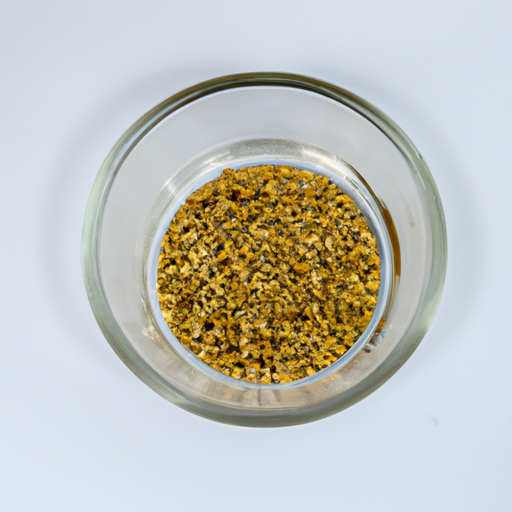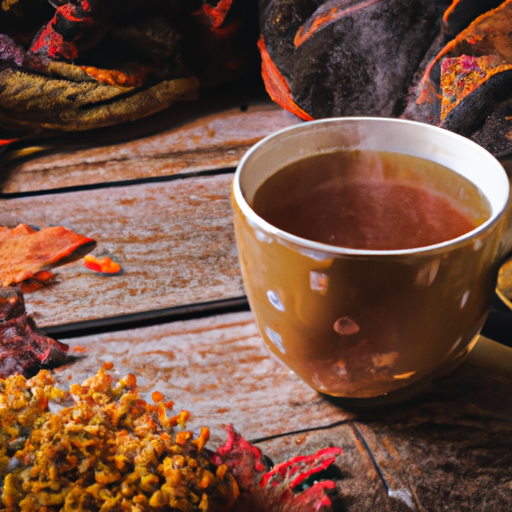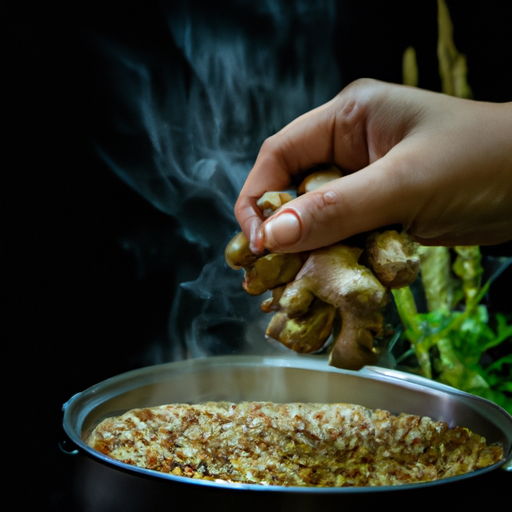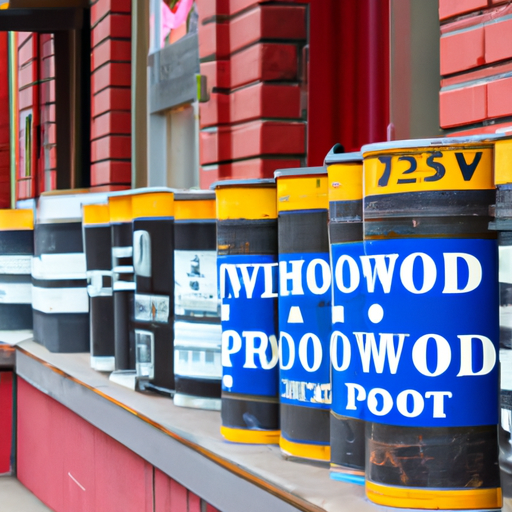Barley tea enjoys widespread popularity across various cultures, recognized for both its revitalizing flavor and its myriad of health advantages. Yet, achieving the ideal barley tea involves more than merely combining boiling water with barley. The secret to crafting a flavorsome barley tea is found in the precise balance of water to barley, a ratio that influences the tea’s intensity and taste.
As someone who loves a good cup of barley tea, I have experimented with different barley water ratios to find the perfect balance of flavor and strength. In this article, I will share my tips and tricks on how to make barley tea with the perfect barley water ratio.
Whether you prefer a strong and robust cup of tea or a milder and more delicate flavor, understanding the importance of barley water ratio is essential to achieve the perfect cup of barley tea.
So, let’s get started!
Key Takeaways
- The perfect cup of barley tea requires the right barley water ratio.
- The basic barley water ratio is 1:6.
- Adjusting the ratio can balance out sweetness or bitterness, and increasing the amount of barley enhances the aroma.
- Different types of barley have unique characteristics that affect flavor and aroma.
Understanding the Importance of Barley Water Ratio
Understanding the barley water ratio is crucial to achieving the perfect balance of flavor and nutrition in your homemade barley tea. When it comes to making barley tea, the ratio of barley to water is essential to ensure that your tea is not too weak or too strong. The right balance of barley and water can bring out the best flavors and health benefits of the grain.
One of the benefits of drinking barley tea is that it’s rich in antioxidants and nutrients, which can help improve digestion, boost the immune system, and lower cholesterol levels. To make the most of these benefits, it’s important to use the right ratio of barley and water.
There are different ways to prepare barley water, but the most common method is to boil barley in water and strain it before serving.
To achieve the basic barley water ratio, you should use one cup of barley to six cups of water. This ratio will ensure that your barley tea is not too weak or too strong, and the flavors and nutrients are well-balanced. You can adjust the ratio according to your taste preference, but it’s essential to start with the basic ratio and make adjustments gradually.
With the right barley water ratio, you can enjoy a refreshing and healthy drink that’s perfect for any time of the day.
Basic Barley Water Ratio
To achieve the perfect blend, it’s essential to get the right amount of each ingredient when preparing this refreshing drink. When it comes to barley water, the ratio of barley to water is crucial in determining the taste and flavor. The basic barley water ratio is 1:12, which means one cup of barley for every twelve cups of water. This ratio is perfect for those who prefer a light and mild taste.
Now, the question is, should you boil or steep barley to make barley water? Boiling barley will result in a stronger and more concentrated flavor, while steeping barley will give a lighter and more refreshing taste. It all depends on your preference.
If you want a stronger taste, boil the barley in water for at least 15 minutes, then let it sit for an hour before straining. If you prefer a lighter taste, steep the barley in hot water for at least an hour, then strain.
Lastly, the importance of water quality cannot be stressed enough when making barley tea. Always use clean and filtered water to avoid any impurities that may affect the taste of your drink. Experimenting with different barley water ratios is a great way to find the perfect blend that suits your taste buds. So, go ahead and try different ratios until you find the one that works for you.
Experimenting with Different Barley Water Ratios
I love experimenting with different barley water ratios because it allows me to adjust the taste to my liking. By tweaking the amount of barley to water, I can make the drink stronger or weaker depending on my mood.
Another fun way to mix things up is by trying different roasting levels for the barley. This can add a unique flavor profile to the drink and make it even more enjoyable.
Adjusting the Ratio to Suit Your Taste
If you’re looking to make your barley tea a bit stronger or weaker, don’t be afraid to play around with the barley water ratio until you find the perfect fit – after all, there’s no one-size-fits-all solution to this brew.
One way to adjust the ratio is by adjusting the sweetness of the tea. If the tea tastes too sweet, you can add more barley to balance out the sweetness. On the other hand, if the tea tastes too bitter or bland, you can add more water or reduce the amount of barley to balance out the taste.
Another way to adjust the ratio is by enhancing the aroma of the tea. If you want a stronger aroma, you can increase the amount of barley in the brew. This will give the tea a nuttier and more robust flavor. If you prefer a milder aroma, you can reduce the amount of barley or add other ingredients such as ginger or lemon to add a refreshing twist.
Adjusting the barley water ratio to suit your taste is just one way to make the perfect barley tea. Next, I’ll discuss how trying different roasting levels can also enhance the flavor of your brew.
Trying Different Roasting Levels
Exploring various levels of roasting can add depth and complexity to the flavor of your brew, making each sip of barley tea a unique and enjoyable experience. When it comes to roasting barley for tea, there are usually two options: light roast or dark roast.
Lightly roasted barley tends to have a nuttier flavor with a hint of sweetness, while dark roasted barley has a more robust, earthy taste. In addition to the flavor profile, the roasting level can also affect the color and aroma of the tea.
Lightly roasted barley will produce a lighter color and a more subtle aroma, while dark roasted barley will result in a darker color and a stronger, more distinct aroma. Experimenting with different roasting levels can help you find the perfect balance of flavor, color, and aroma for your taste.
With that said, using different types of barley can also play a role in the final product, which we’ll explore in the next section.
Using Different Types of Barley
Barley type can drastically affect the flavor and aroma of your tea, so choosing the right one is essential for a satisfying experience. There are various types of barley, each with its unique characteristics, and they can be categorized into two main groups: hulled and hull-less. Hulled barley is the most common type and is used in most barley tea recipes. It has a tough outer layer that needs to be removed before it can be used. On the other hand, hull-less barley has a thin or no outer layer and is easier to process, making it a popular choice.
To help you determine which barley type is right for your tea, here’s a table of some common types of barley and their characteristics:
| Barley Type | Characteristics |
|---|---|
| Pearl barley | Polished, hulled barley with a mild, nutty flavor |
| Hato mugi barley | Unhulled barley with a slightly bitter taste |
| Job’s tears barley | Also known as coixseed, has a sweet, nutty flavor |
| Black barley | Unpolished barley with a rich, roasted flavor |
| Purple barley | Unpolished barley with a slightly sweet taste |
When choosing a barley type, consider the flavor and aroma you want to achieve. Pearl barley is a great all-purpose option, while hato mugi barley is ideal for those who want a slightly bitter taste. Job’s tears barley has a unique sweet taste that can complement other ingredients, while black and purple barley have a rich, robust flavor that works well in tea.
Using different types of barley is just one way to experiment with your barley tea. Another is by using different water temperatures, which can also affect the tea’s flavor and aroma.
Using Different Water Temperatures
To truly enhance your experience, you’ll want to adjust the temperature of your water when brewing your barley tea. The temperature can affect the taste and aroma of the tea. It can also determine how much of the beneficial compounds are extracted from the barley.
Here are some tips on how to use different water temperatures when making barley tea:
-
For a lighter, more refreshing taste, use water that’s around 80°C to 85°C. This temperature range is ideal for people who prefer a milder taste and aroma.
-
If you want a stronger, more robust flavor, use boiling water. Boiling water can extract more of the flavor and aroma from the barley. However, this method can also make the tea more bitter and astringent.
-
If you’re looking for a balance between the two, use water that’s around 90°C to 95°C. This temperature range can give you a nice, full-bodied flavor without being too bitter or overpowering.
-
You can also use cold water to make barley tea. This method is ideal for people who want a more subtle and delicate taste. Simply add the barley to cold water and let it steep for several hours or overnight.
Drinking barley tea can have many health benefits, such as improving digestion, reducing inflammation, and regulating blood sugar levels. The best time to drink barley tea is after a meal or before bedtime.
In the next section, we’ll discuss the different methods for brewing barley tea, whether you choose to use tea bags or loose barley.
Using Tea Bags or Loose Barley
Using tea bags or loose barley can greatly affect the brewing process and the overall taste of your barley tea. If you’re using tea bags, it’s recommended to use one tea bag per cup of boiling water. Steep the tea bags for about 3-5 minutes, depending on your preferred strength.
If you’re using loose barley, the ratio of barley to water is important. A general rule of thumb is to use 1/2 cup of barley per gallon of water. Rinse the barley thoroughly and add it to a pot with the desired amount of water. Bring the water to a boil and then reduce the heat to a simmer. Let it simmer for about 20 minutes, then strain the barley and serve hot or cold.
Barley tea benefits are numerous, including aiding digestion, reducing inflammation, and improving overall heart health. Experimenting with different brewing techniques can also enhance the taste of your barley tea.
In the next section, we’ll explore how to add sweeteners or flavors to your barley tea to further customize your experience.
Adding Sweeteners or Flavors
When I make barley tea, I like to add a touch of sweetness to it. One of my favorite sweeteners to use is honey, which adds a delicious flavor and aroma.
Another option is to add a splash of fresh lemon juice, which gives the tea a refreshing and tangy twist.
Finally, I love to add a few sprigs of fresh mint leaves to my barley tea. This gives it a cool and refreshing taste.
Honey
Honey adds a touch of sweetness and a subtle floral flavor to barley tea. It’s a popular sweetener choice for those who want to indulge in a slightly sweeter cup of barley tea. However, for those who want to avoid using honey, there are other honey alternatives such as maple syrup, agave nectar, and stevia.
Apart from its sweetening properties, honey has several health benefits when added to barley tea. It has antibacterial properties and can help soothe a sore throat. Honey’s also rich in antioxidants, which can boost the immune system. Additionally, it has anti-inflammatory properties that can help reduce inflammation in the body.
Moving on to the next addition to the barley tea, lemon juice adds a tangy and refreshing flavor to the tea.
Lemon Juice
Now that we’ve discussed the benefits of adding honey to our barley tea, let’s talk about another popular addition: lemon juice. Lemon juice adds a tangy and refreshing flavor to the tea, making it the perfect summer beverage. Plus, it’s packed with Vitamin C and antioxidants, which can boost your immune system and help fight off diseases.
To make lemon barley tea, we need to follow the same basic steps as before, but with a few additions. First, we’ll need to slice a lemon into thin rounds. Then, we’ll add the lemon along with the barley to the pot and let it simmer for 30 minutes. Afterward, we’ll strain the mixture and add honey to taste. Alternatively, we can squeeze the lemon juice directly into the tea, which will give it a more concentrated flavor.
| Ingredient | Amount |
|---|---|
| Barley | 1 cup |
| Water | 8 cups |
| Lemon | 1, sliced |
| Honey | To taste |
| Mint leaves | Optional |
If you want to mix things up, you can also try adding other citrus fruits to your barley tea, like oranges or grapefruits. Each fruit will give the tea a unique flavor profile, so feel free to experiment and find your favorite combination. And if you’re feeling fancy, you can garnish your tea with some mint leaves, which will add a refreshing aroma and taste. With all these variations, you’ll never get bored of your barley tea!
Moving on to the next step, let’s talk about how to add some minty freshness to our barley tea.
Mint
Adding fresh mint leaves to your barley tea can provide a burst of cool, invigorating flavor and studies show that it may also aid in digestion. The benefits of mint are undeniable, and it’s no wonder why it’s such a popular herb to pair with meals.
Here are five reasons why adding mint to your barley tea is a great idea:
- Provides a refreshing and cooling sensation
- Can help alleviate digestive discomfort
- Contains antioxidants and anti-inflammatory properties
- Adds a natural sweetness without adding sugar
- Complements a wide range of flavors, from savory to sweet
Pairing mint with barley tea is not only delicious, but it also offers a host of health benefits. Whether you’re enjoying it hot or cold, adding a few sprigs of fresh mint leaves can elevate your barley tea experience.
Speaking of cold brewing barley tea, let’s move on to the next section.
Cold Brewing Barley Tea
First, you’ll want to grab a large pitcher and fill it with one cup of barley and seven cups of cold water. Cold brewing barley tea is a simple and refreshing way to enjoy this healthy beverage. Not only does barley tea have a delicious nutty flavor, but it also offers many health benefits.
Drinking barley tea has been shown to help with digestion, improve blood circulation, and even lower cholesterol levels. It’s no wonder that this tea is a popular beverage in many countries, including Korea and Japan.
There are also many different ways to serve barley tea, such as adding honey or lemon for a sweeter flavor, or serving it hot with a slice of ginger.
To store your freshly brewed barley tea, simply transfer it to a glass container with a lid and keep it in the refrigerator. This will help keep the tea fresh and prevent any bacterial growth.
Enjoy your barley tea cold or hot, depending on your preference. With its numerous health benefits and delicious taste, barley tea is a great addition to any tea collection.
Storing Barley Tea
To keep your refreshing and healthy barley tea fresh for longer, you should transfer it to a glass container with a tight-fitting lid and store it in the fridge. This will help to prolong its shelf life, allowing you to savor its nutty flavor whenever you want.
Barley tea can last for up to a week in the fridge, but its taste and quality may start to deteriorate after a few days. It’s also important to store barley tea leaves properly to ensure they stay fresh. You can store them in an airtight container in a cool, dry place, away from direct sunlight and moisture. This will help to preserve their flavor and aroma for a longer period of time.
Be sure to label the container with the date you purchased the barley tea leaves to keep track of their freshness.
By following these simple storage tips, you can enjoy the benefits of barley tea for an extended period of time. Not only is it a refreshing and delicious beverage, but it also offers a variety of health benefits such as aiding digestion and reducing inflammation.
So go ahead and brew a batch of barley tea, and store it properly to enjoy its goodness for days to come.
Frequently Asked Questions
Can barley tea be made with other grains besides barley?
Yes, there are definitely different grains that can be used as alternatives to barley tea. Some popular choices include corn, rice, and wheat, all of which can be brewed in a similar way to barley. Each grain will have a slightly different flavor profile, so it’s worth experimenting with different options to find the one that suits your taste best.
To make tea from a different grain, start by rinsing it thoroughly and then toasting it in a dry pan until it starts to brown and release its aroma. Then, add it to a pot with water and bring it to a boil. Reduce the heat and allow it to simmer for around 20 minutes before straining out the grains and serving the tea hot or cold.
How long should barley tea be brewed for maximum flavor?
When it comes to brewing barley tea, there are a few key tips to keep in mind for maximum flavor intensity. First and foremost, it’s important to steep the tea for the right amount of time.
I find that brewing the tea for around 10-15 minutes tends to bring out the best flavor, but you can adjust this based on your own preferences. Another important factor is the temperature of the water.
Boiling water can be too hot and overpower the delicate flavors of the barley, so I recommend using water that’s just below boiling point. Lastly, be sure to use fresh, high-quality barley to ensure the best possible taste.
By following these brewing tips, you’ll be able to enjoy a delicious and flavorful cup of barley tea in no time.
Can barley tea be made in a coffee maker or French press?
Let me tell you, making barley tea in a coffee maker or French press is not only possible, but it’s also a convenient way to brew this refreshing beverage.
When it comes to brewing methods, using a coffee maker or French press is similar to making coffee. Simply add the desired amount of barley to the filter or press, pour hot water over it, and let it steep for a few minutes. The taste comparison between brewing methods may vary slightly, but generally, the flavor profile of barley tea remains consistent.
As for the context of how to make barley tea barley water ratio, the ratio of barley to water can vary depending on personal preference, but a common ratio is 1 cup of barley to 8 cups of water.
So go ahead and experiment with different brewing methods to find your perfect cup of barley tea.
What are some health benefits of drinking barley tea?
Barley tea is a refreshing drink that has numerous health benefits. It’s a great alternative to caffeinated drinks and can be enjoyed hot or cold. Some of the benefits of drinking barley tea include better digestion, improved circulation, and a boost in energy levels. It’s also believed to be effective in preventing certain diseases like diabetes and heart disease.
There are many barley tea recipes available that can be easily made at home. Some of the popular recipes include roasted barley tea, green tea with barley, and ginger barley tea. These recipes are simple to make and require only a few ingredients.
Drinking barley tea regularly can be a great way to improve overall health and well-being.
Can leftover barley tea be used for cooking or baking?
Yes, leftover barley tea can definitely be used for cooking and baking! There are many recipes that call for tea as an ingredient, and barley tea is no exception. You can use it in place of water or other liquids in recipes for cakes, muffins, breads, and more.
The subtle nutty flavor of barley tea can add a unique twist to your baked goods. Just be sure to store your leftover barley tea properly in an airtight container in the refrigerator until you’re ready to use it. And if you’re not sure what to make with it, a quick internet search will yield plenty of delicious ideas!
Conclusion
In conclusion, making barley tea is a simple yet enjoyable process that can be customized to suit your preferences. By understanding the importance of the barley water ratio, you can create a delicious and refreshing drink that’s perfect for any occasion.
With a basic barley water ratio of 1:12, you can experiment with different ratios to find the perfect balance of flavor. Did you know that barley tea is one of the most popular drinks in Korea and Japan, with over 80% of households regularly consuming it?
It’s no surprise why, as barley tea is not only delicious but also has numerous health benefits such as aiding digestion and improving blood circulation. So why not give it a try and see for yourself? Whether you prefer it hot or cold, with or without sweeteners, there’s a barley tea recipe out there that’s perfect for you.
So go ahead and start brewing!










